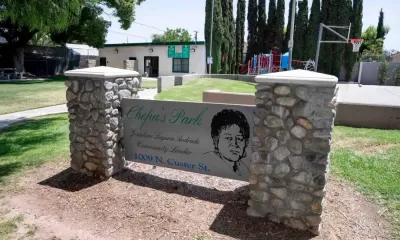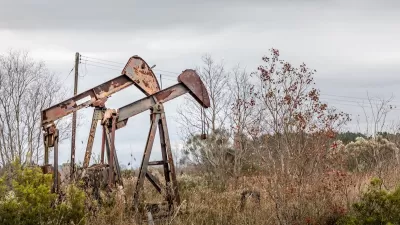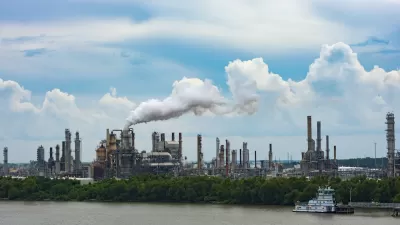The contaminated soil and neglected infrastructure in Santa Ana's Barrio Logan community are a result of decades of land use decisions and willful disinvestment, one journalist writes.

Yvette Cabrera recounts the history of Barrio Logan, a predominantly Latino neighborhood in Orange County, California. Logan, known as the "Plymouth Rock of Santa Ana" for its early ties to the Mexican American community, has long experienced neglect from the city. Local activists here have banded together to fight against polluting businesses and secure safety and infrastructure improvements such as speed bumps and sidewalks.
Zoned for industrial use, Barrio Logan has experienced waves of environmental degradation and soil contamination from petroleum, heavy metals, pesticides, and other harmful substances. Yet "Residents knew little about this soil contamination, despite the city’s environmental assessments calling for a deeper exploration of potential lead exposure in the neighborhood in the late 1970s." Cabrera notes that "Comprehensive citywide soil test results were not publicly available until 2017, when I published an investigation that found hazardous levels of lead in the soil in neighborhoods across Santa Ana, which today is Orange County’s second-largest city."
Cabrera argues that Logan's degradation was a result of conscious zoning and land use decisions made throughout the last century, decisions that allowed harmful industrial businesses to build facilities adjacent to residential neighborhoods without much public disclosure. And this isn't limited to Barrio Logan. Around the country, millions of people live in areas similarly contaminated by toxic substances, unaware of the danger beneath their feet, in the air, or in their water supply.
FULL STORY: A history of pollution pervades a California neighborhood

Trump Administration Could Effectively End Housing Voucher Program
Federal officials are eyeing major cuts to the Section 8 program that helps millions of low-income households pay rent.

Planetizen Federal Action Tracker
A weekly monitor of how Trump’s orders and actions are impacting planners and planning in America.

Ken Jennings Launches Transit Web Series
The Jeopardy champ wants you to ride public transit.

Washington Legislature Passes Rent Increase Cap
A bill that caps rent increases at 7 percent plus inflation is headed to the governor’s desk.

From Planning to Action: How LA County Is Rethinking Climate Resilience
Chief Sustainability Officer Rita Kampalath outlines the County’s shift from planning to implementation in its climate resilience efforts, emphasizing cross-departmental coordination, updated recovery strategies, and the need for flexible funding.

New Mexico Aging Department Commits to Helping Seniors Age ‘In Place’ and ‘Autonomously’ in New Draft Plan
As New Mexico’s population of seniors continues to grow, the state’s aging department is proposing expanded initiatives to help seniors maintain their autonomy while also supporting family caregivers.
Urban Design for Planners 1: Software Tools
This six-course series explores essential urban design concepts using open source software and equips planners with the tools they need to participate fully in the urban design process.
Planning for Universal Design
Learn the tools for implementing Universal Design in planning regulations.
Heyer Gruel & Associates PA
Ada County Highway District
Institute for Housing and Urban Development Studies (IHS)
City of Grandview
Harvard GSD Executive Education
Toledo-Lucas County Plan Commissions
Salt Lake City
NYU Wagner Graduate School of Public Service





























